(320) I go to Tsukubasan Shrine
文字数 3,294文字
When we went to Asahi Pass View Park, we climbed Fruit Line by car from near Komachi no Sato. Since it was boring to go back the same way, we went to Tsukubasan Shrine via the Purple Line before returning home.
Mt.Tsukuba is a mountain with two peaks, Mt. Nantai (男体山871 m above sea level) and Mt. Nyotai (女体山 877 m).
In general, a shrine consists of two halls. One is a main hall that enshrines the object of worship (gods). The other is a worship hall where human beings worship the gods housed in the main hall. The worship hall is usually adjacent to the main hall.
The main hall of Mt. Nantai is located on the summit of the west peak.
The main hall of Mt. Nyotai is located at the top of the east peak.
The worship hall is located on the mountainside (altitude 270m).
Tsukubasan Shrine is located on the south side of Mt. Tsukuba, which is higher than the worship hall, and covers an area of 354ha.
When people say “Tsukubasan Shrine'', they generally refer to the area around this worship hall.
Tsukubasan Shrine dates back to 782, when Hosso Buddhism's Tokuetsu Hoshi (徳溢法師) founded Tsukubasan Chisokuin Chuzenji Temple (筑波山知足院中禅寺). At the end of the Edo period, the main hall (Omido) of Chuzenji Temple stood in the place of the current worship hall, with a three-story pagoda next to it, and the current Zuishinmon Gate(随神門) was called the Niomon Gate(仁王門). In addition, there were a bell tower, Yakushido, Kyodo, and Shotoku Taishido.
In the Meiji era, the main hall was demolished due to the separation of Shintoism and Buddhism, and a worship hall was built in its place. Buddhist facilities were demolished except for the Niomon Gate, which remains, but changed its name to Zuishinmon(随神門).
The bell tower, which avoided destruction, was moved to Keiryu-ji Temple (慶龍寺) in Tsukuba City, and the statue of Nio was moved to Tofukuji Temple (東福寺) in Tsukuba City.
In this way, the temple was abolished, and only the shrine remains as Tsukubasan Shrine.
In 1930, the temple was rebuilt as Tsukubasan Omido(大御堂).
On the right side of the worship hall, there are Hie Shrine(日枝神社) and Kasuga Shrine(春日神社). The main halls of these two shrines are independent, but the worship hall is a large, shared building. In front of the worship hall stand red flags with the words "Ebisu God".
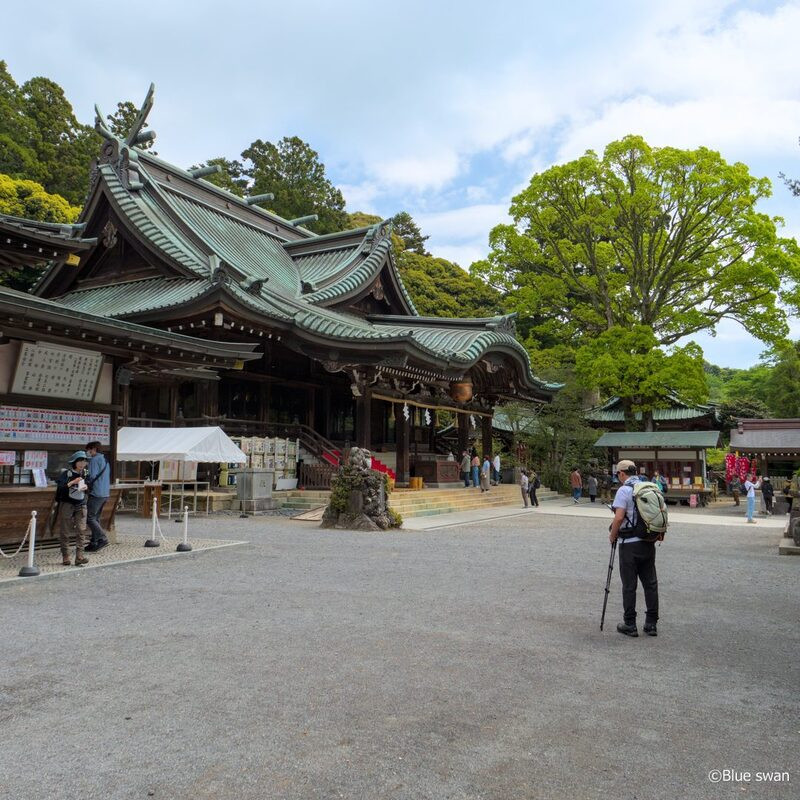
① Proceeding from the parking lot, you will first see the worship hall of Tsukubasan Shrine.

② I am in front of the large bell, which is the symbol of the worship hall of Tsukubasan Shrine.
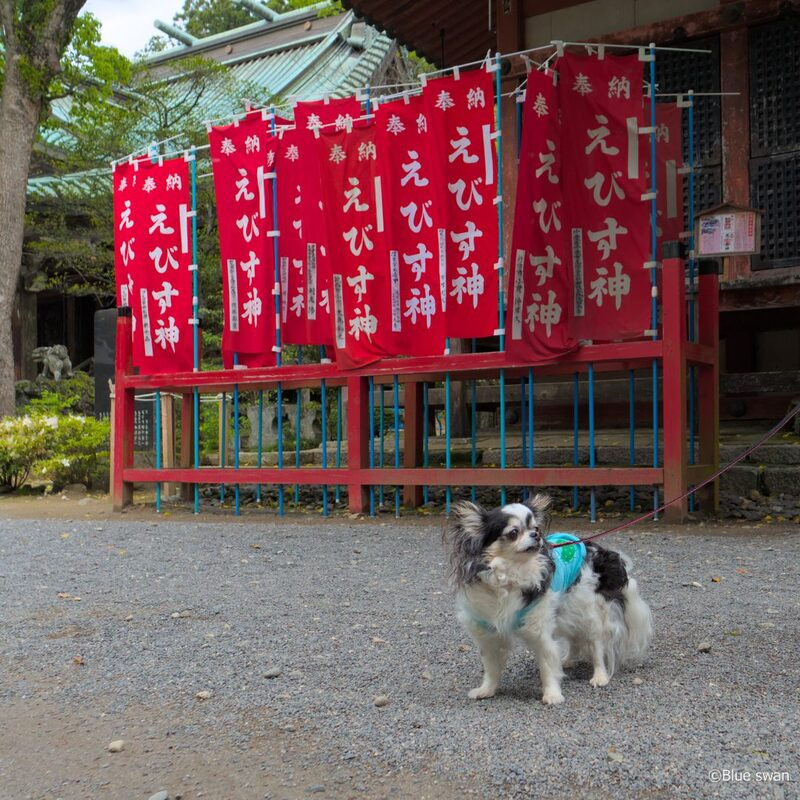
③ A lot of flags which read "Ebisu God" are in front of the worship hall of Hie Shrine and Kasuga Shrine.
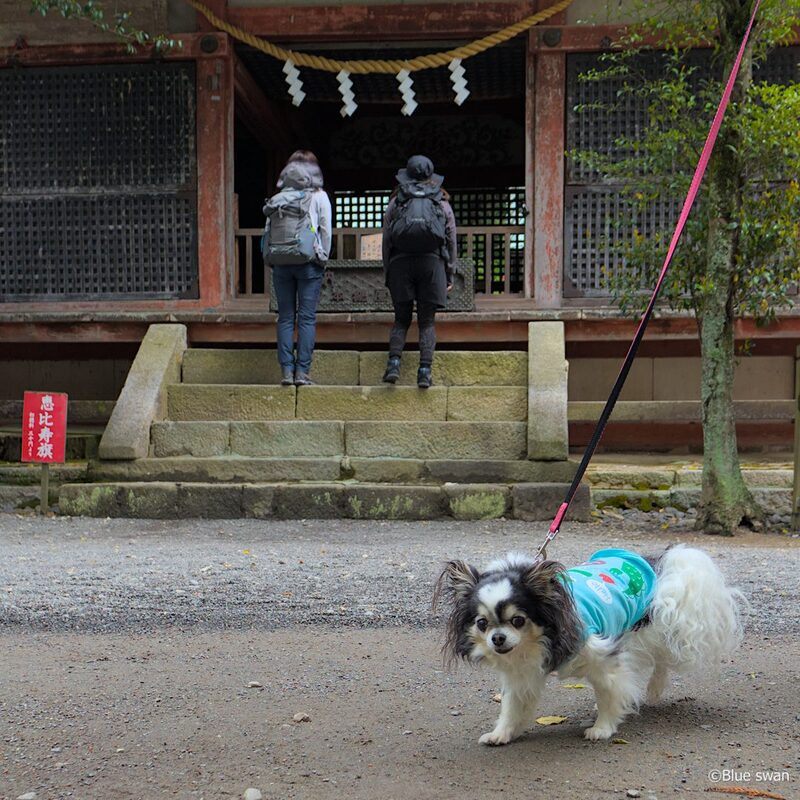
④ I am in front of Ebisu Shrine.
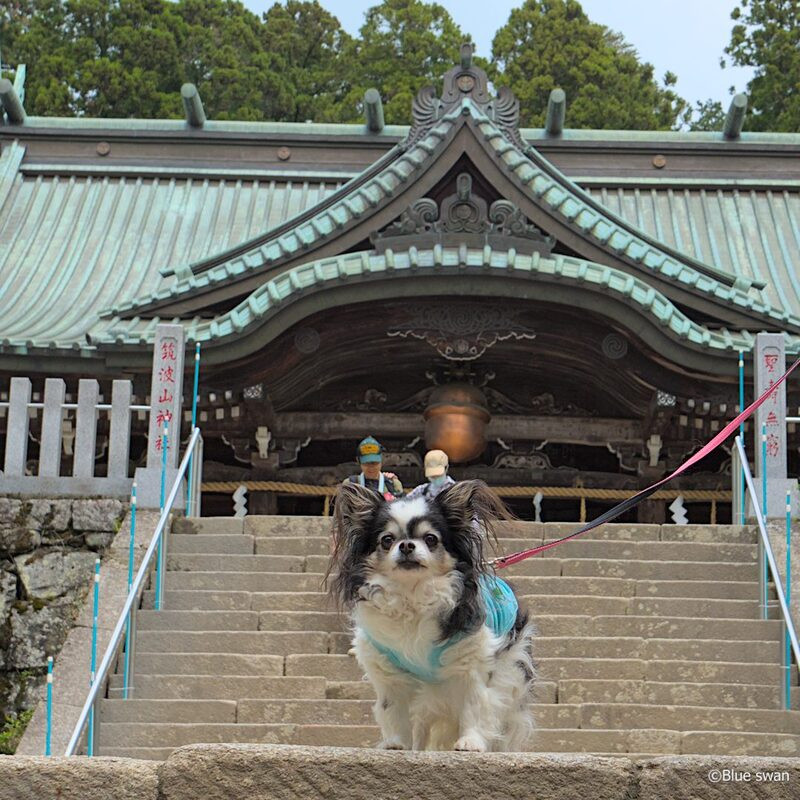
⑤ I'm coming down the approach from the worship hall in the opposite route.
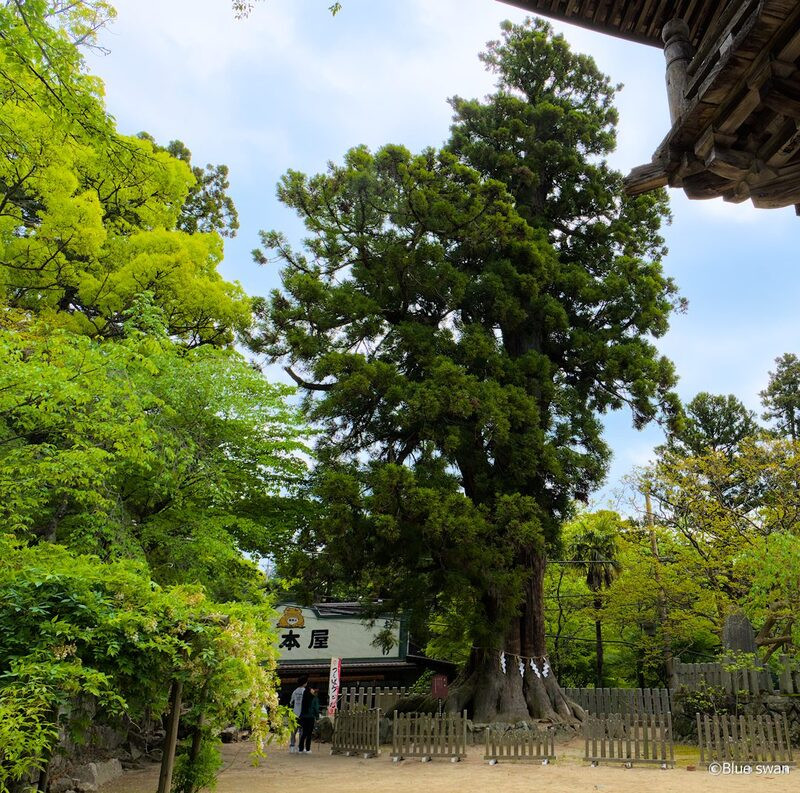
⑥ This is a sacred large cedar tree (estimated age is 800 years old, tree height 32m, trunk circumference 9.8m).
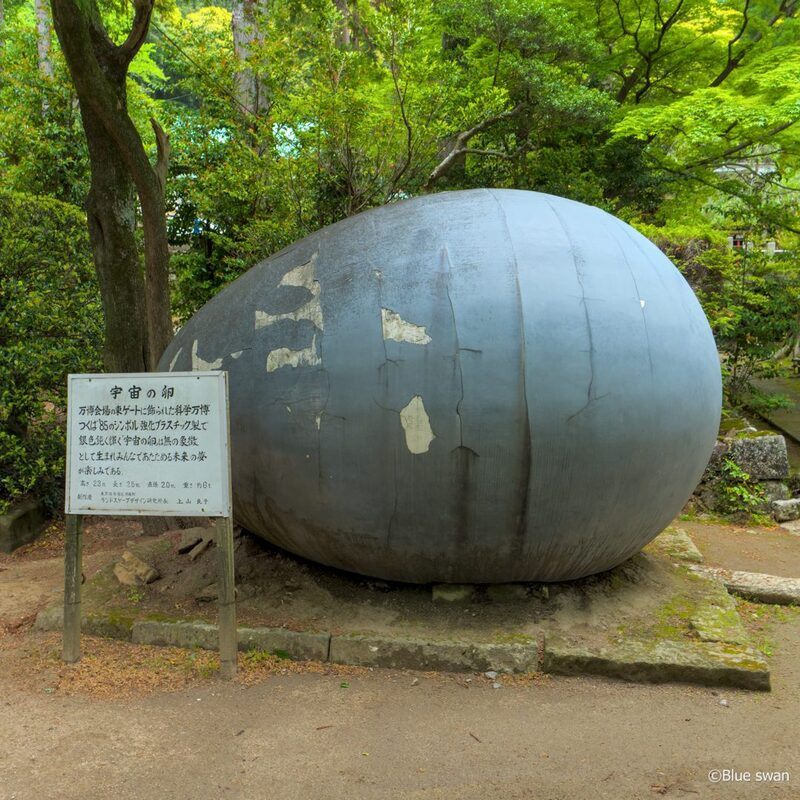
⑦ There is a mysterious object written as "Cosmic Egg".
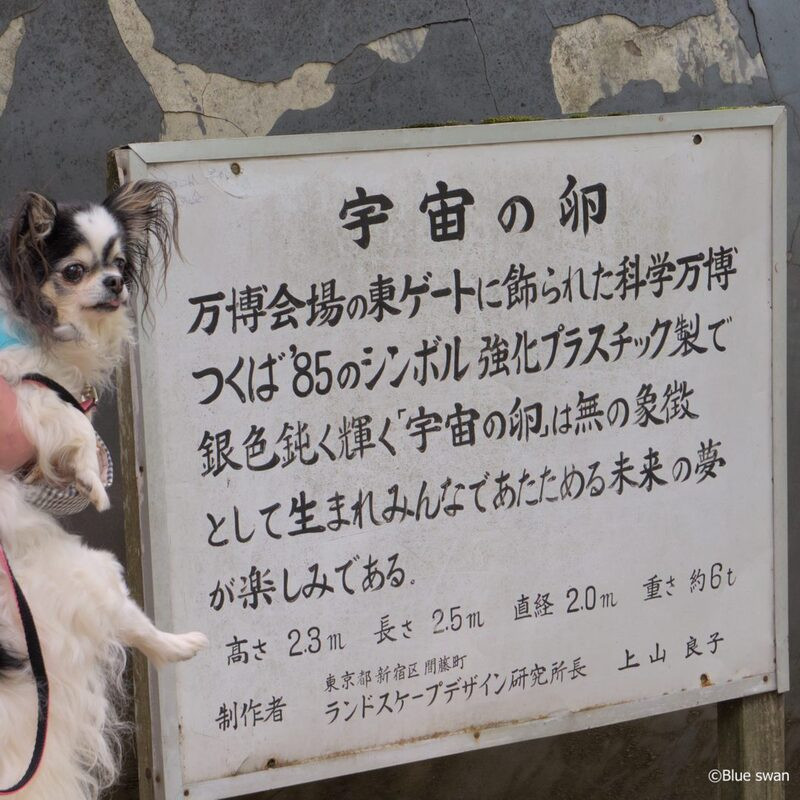
⑧ I'm reading the explanation of the "Cosmic Egg".

⑨ This is a picture of Zuishinmon gate and a wisteria trellis built in 1811. In the back right, you can see a little of Osugi, a sacred tree.
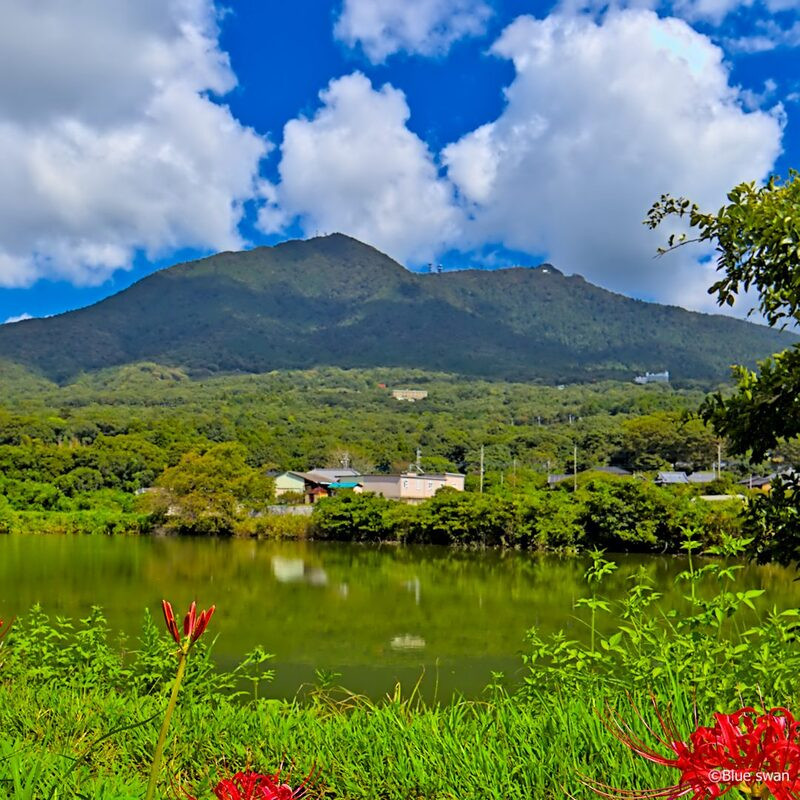
⑩ It is unnatural that the object of worship (in this case Mt. Tsukuba) doesn’t appear when you go to Tsukubasan Shrine. So, I’ll post a photo Dad took before. This is a photo of Mt. Tsukuba.
Mt.Tsukuba is a mountain with two peaks, Mt. Nantai (男体山871 m above sea level) and Mt. Nyotai (女体山 877 m).
In general, a shrine consists of two halls. One is a main hall that enshrines the object of worship (gods). The other is a worship hall where human beings worship the gods housed in the main hall. The worship hall is usually adjacent to the main hall.
The main hall of Mt. Nantai is located on the summit of the west peak.
The main hall of Mt. Nyotai is located at the top of the east peak.
The worship hall is located on the mountainside (altitude 270m).
Tsukubasan Shrine is located on the south side of Mt. Tsukuba, which is higher than the worship hall, and covers an area of 354ha.
When people say “Tsukubasan Shrine'', they generally refer to the area around this worship hall.
Tsukubasan Shrine dates back to 782, when Hosso Buddhism's Tokuetsu Hoshi (徳溢法師) founded Tsukubasan Chisokuin Chuzenji Temple (筑波山知足院中禅寺). At the end of the Edo period, the main hall (Omido) of Chuzenji Temple stood in the place of the current worship hall, with a three-story pagoda next to it, and the current Zuishinmon Gate(随神門) was called the Niomon Gate(仁王門). In addition, there were a bell tower, Yakushido, Kyodo, and Shotoku Taishido.
In the Meiji era, the main hall was demolished due to the separation of Shintoism and Buddhism, and a worship hall was built in its place. Buddhist facilities were demolished except for the Niomon Gate, which remains, but changed its name to Zuishinmon(随神門).
The bell tower, which avoided destruction, was moved to Keiryu-ji Temple (慶龍寺) in Tsukuba City, and the statue of Nio was moved to Tofukuji Temple (東福寺) in Tsukuba City.
In this way, the temple was abolished, and only the shrine remains as Tsukubasan Shrine.
In 1930, the temple was rebuilt as Tsukubasan Omido(大御堂).
On the right side of the worship hall, there are Hie Shrine(日枝神社) and Kasuga Shrine(春日神社). The main halls of these two shrines are independent, but the worship hall is a large, shared building. In front of the worship hall stand red flags with the words "Ebisu God".

① Proceeding from the parking lot, you will first see the worship hall of Tsukubasan Shrine.

② I am in front of the large bell, which is the symbol of the worship hall of Tsukubasan Shrine.

③ A lot of flags which read "Ebisu God" are in front of the worship hall of Hie Shrine and Kasuga Shrine.

④ I am in front of Ebisu Shrine.

⑤ I'm coming down the approach from the worship hall in the opposite route.

⑥ This is a sacred large cedar tree (estimated age is 800 years old, tree height 32m, trunk circumference 9.8m).

⑦ There is a mysterious object written as "Cosmic Egg".

⑧ I'm reading the explanation of the "Cosmic Egg".

⑨ This is a picture of Zuishinmon gate and a wisteria trellis built in 1811. In the back right, you can see a little of Osugi, a sacred tree.

⑩ It is unnatural that the object of worship (in this case Mt. Tsukuba) doesn’t appear when you go to Tsukubasan Shrine. So, I’ll post a photo Dad took before. This is a photo of Mt. Tsukuba.
